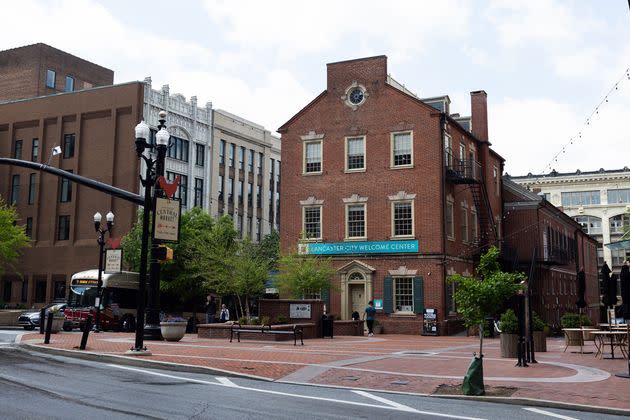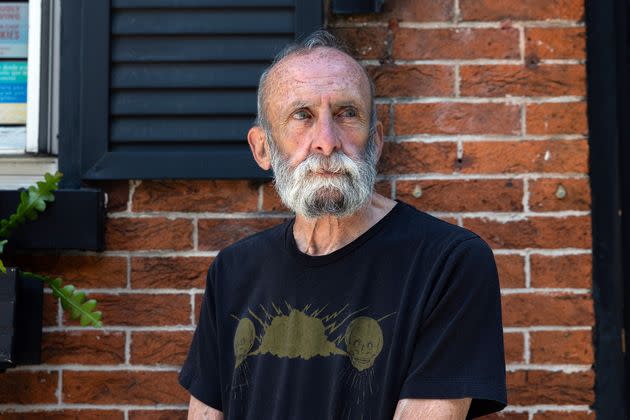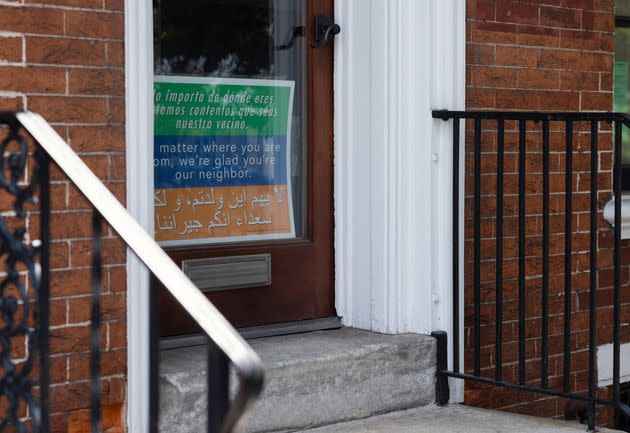LANCASTER, Pa. — Jaime Arroyo was surprised. The 35-year-old councilman from this small city less than two hours outside Philly hadn’t expected this kind of response to a municipal ordinance, of all things. But the backlash to the Lancaster City Council’s Trust Act, or “welcoming city” ordinance, came on quickly and intensely.
The statute, passed in late February, codified Lancaster’s previously informal policy for cooperating with federal immigration authorities: essentially that it won’t, unless compelled to under state or federal law, which generally happens in cases of active warrants or prosecution. Practically, it means that city officials, including cops, can’t ask about a person’s immigration status or hand over information to Immigration and Customs Enforcement that might lead to a deportation.
Arroyo, a Democrat, viewed the Trust Act as just another functional measure, like any other thing the city council might work on.
“At the end of the day, when you’re working in the city, you’re making sure the water turns on. Human services, things like that. So I got caught off guard by some of the responses,” Arroyo told me over Zoom last month, from a sunny office above the downtown’s multicultural farmer’s market, the kind of place where for lunch you can enjoy both an empanada and an open-face Scandinavian sandwich. The market itself underscores the diversity of Lancaster, which proudly touts itself as the nation’s “refugee capital.”
Besides being a councilman, Arroyo is the CEO of a local nonprofit that helps entrepreneurs who are women and people of color. His family, like lots of others, emigrated from Puerto Rico to Pennsylvania’s Dutch Country in the 1960s to work in farming, so he understands what it’s like to end up here in search of work and a better life. And now, given his work spearheading the Trust Act, he gets how political that can be, too.
“You’re seeing this trend across the nation where local officials start to posture themselves with this national rhetoric,” he said. “There’s just been a lot of misinformation on that side that they were using intentionally, I think, because it’s an election year.”
Lancaster’s on-the-books policy for refusing cooperation with ICE and the blowback from GOP officials, including the Republican-controlled Pennsylvania Senate, reveals, on a local scale, just how central immigration has become to the nation’s politics — even in a landlocked mid-Atlantic state that’s about as far as you can get in the country from the Mexico border.
Voters here in Pennsylvania, the largest of the 2024 presidential swing states, care more than you might expect about immigration and border security — a recent poll of voters over 50, the nation’s most reliable voting bloc, had it second only to personal economic issues like jobs and social security — and this year’s election may very well hinge on whether President Joe Biden, who won Pennsylvania four years ago, can assuage voters who seem to prefer former President Donald Trump’s hardline approach to immigration.
Trump has vowed a likely unenforceable mass deportation of millions of undocumented immigrants using, he hopes, local law enforcement forces like the Lancaster Police Department. Biden, meanwhile, has proposed asylum changes that would speed up the process by more quickly identifying and deporting applicants who do not qualify. Earlier this year, the White House also backed a bipartisan border security deal that would have sharply cut down on border crossings — but Trump, eager to deny Biden a victory, urged GOP lawmakers to oppose it.
‘Welcoming’ City Versus ‘Sanctuary’ City
The proponents of Lancaster’s Trust Act, who happen to mostly be Democrats, say it’s designed to make undocumented residents and foreign-born residents in general feel more comfortable reporting crimes or accessing city services. The law’s loudest detractors, who happen to mostly be Republicans, say it will turn Lancaster into a “sanctuary city” where illegal immigration goes unchecked, creating lawlessness and straining city services in a challenging economy.
But interviews this month with nearly two dozen voters in Lancaster, both in the blue dot of a city and the red surrounding county, revealed more nuanced views, with many worried about mass immigration while acknowledging how it has benefited the area economically.
In Lititz, a small town out in the country, Alicia Miller, an 85-year-old swing voter who leans right and hasn’t decided yet whether she’s picking Trump or Biden this year, says immigrants are vital to the area — she would know, since her family runs a seven-acre poultry farm she says relies on migrant workers. “I’m for controlled immigration,” Miller said. “I’m not for immigration to the point it’s uncontrolled.”
Miller’s more liberal friend even agreed. “That’s a tough thing to do, because we do need workers,” said Linda Dapcic, an elected official from Berks, the next county over. The women were sitting on a bench together in Lititz’s charming downtown, where tourists flock for expensive chocolate and Amish-crafted wood furniture. (Former Vice President Mike Pence even campaigned here back in 2020 at a dairy farm.) “The reality is 20, 30 years from now, America is no longer going to be white Americans,” said Dapcic, describing a reality she seemed happy to embrace.
But the response to the ordinance from beyond the city has been almost universally negative. A month after the Lancaster City Council passed the Trust Act, the Lancaster County Commission passed a resolution along party lines declaring Lancaster a “non-sanctuary county” and urging the city to repeal its ordinance, which the city has made clear it has no intention of doing.
Joshua Parsons, one of the GOP commissioners who backed the resolution, acknowledged the county had long disapproved of the city’s policy toward ICE. But the new ordinance is viewed as a step too far. “There is a difference between having an informal policy, which we may not like, and taking a formal vote to authorize your police department to ignore the law,” Parsons said following the March 20 vote.
Lancaster Mayor Danene Sorace called this characterization of the Trust Act “misguided” and “inaccurate.” The county commissioners did not respond to multiple individual requests for interviews about the resolution and the immigration climate across the county.
‘Everything Has Grown, Everything Is Going Up’
By April, the Trust Act had garnered the attention of GOP lawmakers in the Capitol. Pennsylvania Senate Republicans passed party-line legislation that would require local prosecutors to notify ICE if they’ve arrested and charged someone with a crime who is undocumented, a messaging bill aimed at Lancaster. The bill died, as expected, in the House, which Pennsylvania Democrats managed to flip in 2022.
State Rep. David Zimmerman, a Republican who represents parts of Lancaster County and has been outspoken against the city, said he found its actions on the Trust Act “very troubling” and timed politically to this year’s election.
“I’m all about legal immigration. But what we’re doing here … is creating a sanctuary city, or as they’re calling it, a ‘welcoming city’ — which is the same idea, really, to protect and kind of have it be almost a hideout for illegals,” Zimmerman told me over the phone. “The rest of us are asked to follow the law, and for a city to adopt something like that to encourage illegals to have a hideout is just unbelievable to me, really.”
Zimmerman cited the county’s growth as a likely reason for the widening divide between the city and county on all sorts of political issues. Lancaster County added more than 35,000 people in the last census, although it’s impossible to know how many are undocumented. Most of the county’s diversity is concentrated in the city: Roughly 40% of the population identifies as Hispanic or Latino, and nearly 13% of residents are foreign born. Mostly beyond the city limits, the county is home to an estimated 90,000 Pennsylvania Dutch who flocked here in the 18th century to escape persecution, and established a religiously-rooted legacy of resettling refugees and asylum seekers.
“The religious influence in the county is very strong and the secular influence in the city is very strong,” said Lou Ziegler, a 70-year-old personal-care assistant who was watching MSNBC’s coverage of Trump’s hush money trial on a tablet outside a downtown Lancaster coffee shop last week. Ziegler said even with eager foreign-born workers coming here in droves, it’s hard to find people to work certain jobs. “Everyone knows without immigrants you won’t have jobs,” he said. “Restaurants can’t get a full staff. My job can’t get a full staff.”
There’s also tension over what locals see as a tug-of-war between the desire for the city to be more accommodating to immigrants and a new wave of development and pricey housing designed to attract higher earners, like the young workers who walk around downtown with office badges clipped to their clothes.
It’s a trend that makes the city less welcoming than even the threat of immigration enforcement, said Jhoan Reynoso, a 35-year-old barber whose family emigrated here from the Dominican Republic. “Everything has grown, everything is going up,” Reynoso said from the back of a quiet barbershop. “I feel like Lancaster city is trying to push minorities out. That’s why the rent is going up. That’s why they’re making so many investments.”
A Tough Climate
Arroyo, who has lived in Lancaster most of his life — returning after college to start a family — has experienced subtle moments that underscore the political changes taking root in his longtime home, like the startling moment last year when he passed a woman in a Confederate flag T-shirt on a running trail not far outside the city, something he never expected to encounter here. “It’s kind of wild that [it was] 20 minutes outside my home, where I have no fear at all,” he said.
Arroyo was initially hopeful that at least a few townships in the county would consider adopting their own versions of the Trust Act. Instead, they’ve followed the county commission’s lead. Earlier this month, officials in East Cocalico Township unanimously adopted a resolution declaring immigration a “serious issue” that “strains resources,” and directed local law enforcement to comply with any directives from ICE.
“It seems like it swung the other way,” Arroyo said, laughing. “But I’m talking to more elected officials … maybe if it’s not a welcoming ordinance, it’s more education and awareness around what these policies mean.”
Arroyo does not seem to relish all the attention on the city. And neither do some of the advocacy groups that serve the population here. CASA in Action, the group that pitched the Trust Act to Lancaster officials last year, did not respond to numerous requests for interviews. The Lancaster mayor’s office, over the course of the past month, twice cited a tight schedule that prevented her from speaking with me.
Arroyo acknowledges that maybe he should have expected a tough reception, given the political climate. “I think people come into 2024 with an opinion on immigration,” he said, “and I don’t know if anything going on here is going to sway that one way or another.”
Arroyo sees only one real way to quell the tension, and it’s well beyond the purview of anyone in Lancaster: “We need comprehensive reform around immigration, period, in order to move the needle in a way that everyone can feel good about,” he said, with a hint of frustration — “but,” he added, “that’s above my paygrade.”




